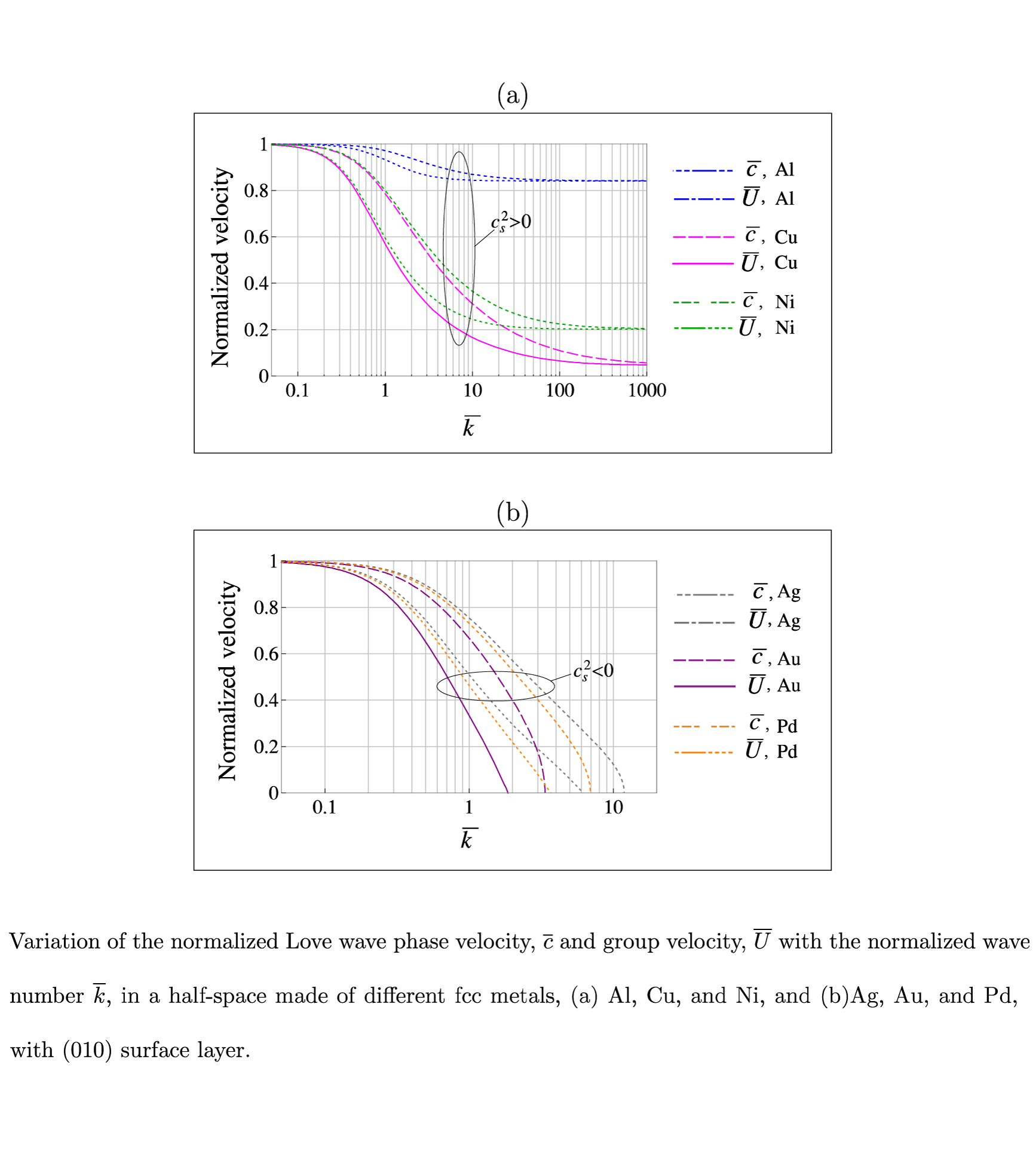Hossein M. Shodja

Using the mathematical framework of surface elasticity theory, an analytical solution is presented for Love and Rayleigh surface wave propagations in a semi-infinite medium with face-centered cubic (fcc) single crystal structure. Previous formulations within surface elasticity have been based on the simplistic assumption of isotropy. Two different crystallographic orientations with respect to the incident wave vector are examined: (a) the free surface of the half-space is (010) plane and the surface waves propagate in [100] direction, (b) the free surface of the half-space is (110) plane and the surface waves propagate in direction. It is well-known that, contrary to the predictions based on classical theory, surface elasticity theory predicts Love waves can propagate in a homogeneous isotropic elastic fcc half-space and is dispersive. Moreover, Rayleigh wave propagation in a homogeneous single crystalline fcc half-space is dispersive. From the given numerical examples, it can be observed that Rayleigh wave propagation in Al half-space with (110) plane as its free surface is anomalous dispersive (AD), whereas in Ag, Au, Cu, Ni, and Pd half-space is normal dispersive (ND). On the other hand, Love wave propagation in Ag, Al, Au, Cu, Ni, and Pd half-spaces associated to either free surface layers, (010) and (110) is ND.

Surface elasticity, Love and Rayleigh surface waves, Face-centered cubic crystals, Half-space, Dispersion relation